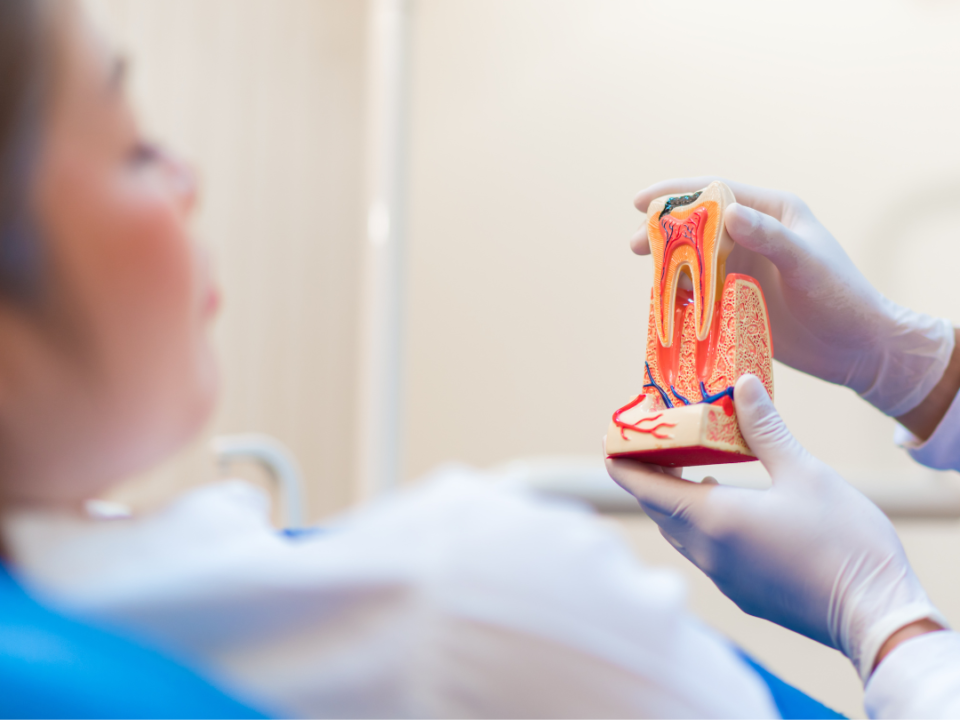
Meet Dr. Estes: Your Top Endodontic Specialist in Charleston, SC
March 27, 2021
Root Canal vs Extraction and Implant
May 7, 2021
Meet Dr. Estes: Your Top Endodontic Specialist in Charleston, SC
March 27, 2021
Root Canal vs Extraction and Implant
May 7, 2021If you have a recommendation for a root canal, you need as much information as possible to prepare for the procedure properly and to help yourself heal after. To help you know how to prepare for a root canal, we at Innovative Endodontics in Charleston, SC, have created this guide.
Why You Might Need a Root Canal Treatment
Root canal treatment is not always required. However, for patients who have experienced damage to a tooth or a cavity, bacteria can get into the root canals. Once inside, the bacteria begin to infect the tooth pulp, causing discomfort when biting, sensitivity to hot and cold foods, and referred pain.
If you don’t know whether you need root canal treatment but experience any of the common symptoms of needing one, you need to contact your dentist for an appointment. Many things can cause tooth pain. Your general dentist will conduct an exam and take x-rays of your teeth to find out the problem. If they identify deep decay, they may recommend that you have root canal treatment.
If you have infected pulp, a dental professional needs to treat it. Treating the pulp tissue of the affected tooth serves two purposes that have lasting results.
First, it will protect your tooth from loss. Continued infection can lead to the tooth’s loss, which requires a dentist to extract it and install a pricy implant in its place. Root canal therapy protects you from this pain, hassle, and expense of tooth extraction.
Second, removing the infected tissue also protects you from the infection spreading. If the infection spreads, it could affect your jaw or even other parts of your body, making you very ill.
Having a root canal makes it possible to save a tooth that a dentist might have otherwise pulled. If you want to keep your natural teeth for life, always follow through with recommendations for a root canal. If you wait too long, you could find that the damage has become too extensive for a root canal treatment to work.
What Happens During The Therapy?
During root canal therapy, the endodontist images your tooth to identify the location and extent of the infection inside the tooth. Then, they will prepare you for the procedure by starting with the most important step, which is getting you numb for treatment.
The actual root canal involves using methods that remove the affected soft tissue in the tooth. Once all the infected material is out, the endodontist will seal off the root canals. The procedure ends with the endodontist adding a temporary filling to cover the treated tooth.
Following your root canal therapy, you need to adhere to the post-procedure directions given. These are important for ensuring fast healing and a minimum of discomfort. The most important step is to visit your dentist soon to have a permanent restorative covering, usually a crown, placed on the tooth. Only after you have this permanent fixture will you complete the root canal treatment.
How to Prepare for a Root Canal
To prepare for a root canal, you don’t need to do much. However, make sure to bring all your questions to the consultation appointment or call the endodontist before the procedure.
The endodontist will make recommendations on whether you should take pain medication or antibiotics before the procedure based on your personal medical history. Therefore, don’t follow anyone else’s advice about medicine before a root canal because no one else knows about your case.
Take all routine medications as normal and eat meals appropriately, especially in consideration of being numb for several hours following treatment. Make sure to brush and floss your teeth before arriving at the endodontist for your root canal treatment.
What to Do After a Root Canal
Part of the preparation for a root canal includes knowing what you need to do after. Make sure that you have both ibuprofen and acetaminophen at home because you can alternate taking both of these pain medications to get the maximum relief from the discomfort following the root canal.
Additionally, you should take care not to bite down using the treated tooth until after you get a crown. The tooth’s temporary filling will be delicate. Plus, you may feel a little uncomfortable when eating. Therefore, you might want to stock up on softer foods to eat for a few days after the procedure because the sensitivity with eating often is the final side effect to resolve.
Watch out for signs of complications, too. While very rare, complications can happen. If you have severe pain that the medication does not ease at all, worsening pain, swelling, or a fever, contact the endodontist’s office at once.
Why You Should See an Endodontist for the RCT?
Why should you see an endodontist for a root canal instead of just letting your dentist do the procedure? True, both dental experts can perform root canal therapies. However, endodontists have the training to mitigate pain and infection. Plus, they perform many more root canal treatments than dentists, making them much better practiced.
Root canal therapy treats the tooth pulp, which is the focus of the field of endodontics. General dentists have a better focus on the exterior of your teeth and gums. Therefore, if you need a filling, you see a dentist. However, an endodontist will have better training, more expertise, and better equipment to conduct root canal treatment.
At Innovative Endodontics, our Dr. Estes earned her masters through research into antibacterial endodontic materials, attesting to her commitment to keeping her patients healthy and comfortable throughout their experience.
Contact Innovative Endodontics for Your Top Root Canal Specialist in Charleston, SC
Root canal treatment doesn’t have to be frightening. With the experience of Dr. Estes and the high-tech endodontic equipment used in the office, patients have a less painful, more comfortable experience than elsewhere. In addition, Dr. Estes is extremely comforting and provides her patients with an exceptional patient experience (just read her reviews!).
If you live in Goose Creek, SC, or the surrounding areas and need a qualified endodontist to perform your root canal treatment, contact us at Innovative Endodontics to make an appointment.




